NIL
Inside the transfer portal
Dan MurphyApr 25, 2025, 06:55 AM ET Close Covers the Big Ten Joined ESPN.com in 2014 Graduate of the University of Notre Dame Open Extended Reactions EMOTIONS TUG AT Clayton Powell-Lee as he pulls open the doors to the Georgia Tech football team facility a few minutes before noon on Monday. The 21-year-old strong safety […]
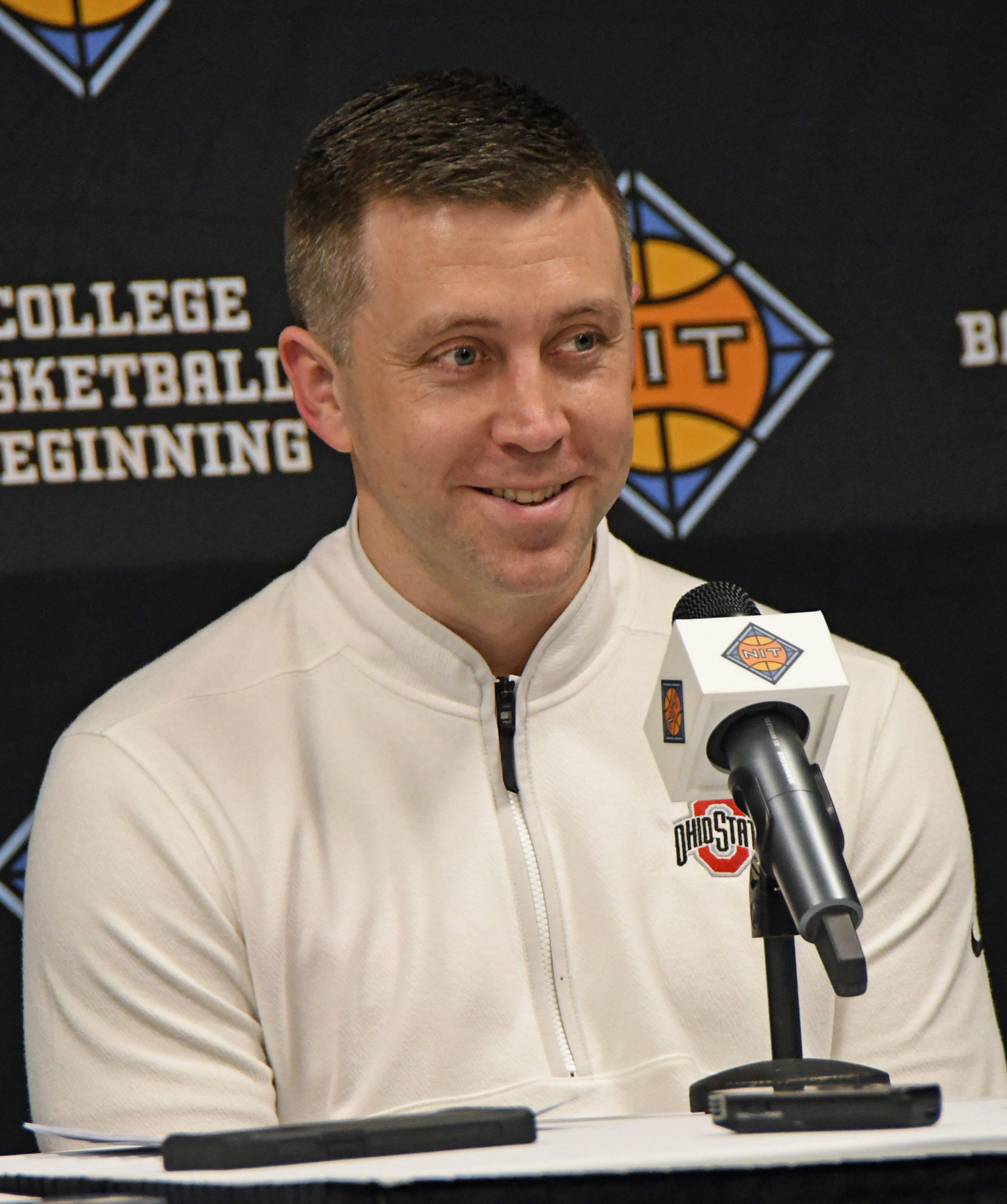

EMOTIONS TUG AT Clayton Powell-Lee as he pulls open the doors to the Georgia Tech football team facility a few minutes before noon on Monday. The 21-year-old strong safety has spent some sleep-deprived nights for the past month searching for an answer to perhaps the most consequential choice of his life: Stay put on his current team or transfer in search of a bigger payday.
Decision time has arrived.
If he stays at Georgia Tech for his final season of eligibility, he can build on his 53 tackles as a starter last season, after which he landed a six-figure name, image and likeness contract with the school. But Powell-Lee says he’s worth more. His agents — Jacob Piasecki and Jason Bloom of A&P Sports Agency — and his mother agree.
Editor’s Picks
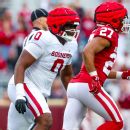
1 Related
Earlier that morning, Georgia Tech had declined to negotiate an increase, Powell-Lee’s agents said. But the market for defensive backs is booming, they told him, and chances are good he could double his current payday. Provided, that is, he was willing to set aside his notions of team loyalty, leave his hometown Atlanta and abandon the school where his father, Gary Lee, had caught touchdown passes for the Yellow Jackets in the 1980s.
Sitting outside the team facility moments before entering, Powell-Lee dials into a conference call with Piasecki, Bloom, and his mother, Rometta Powell. All had agreed to let ESPN listen in.
“They need to be shook awake,” Rometta Powell says to the group. “They’re trying to play games. They’ve got the money.”
The pressure is building on Powell-Lee. The next step, they tell him, is to go upstairs and get the paperwork from a compliance officer to enter the transfer portal. Powell-Lee agrees with the others on the call, hangs up and pulls open the doors. But instead of the compliance office, he soon finds himself standing in the doorway of head coach Brent Key.
“I told him I had an offer on the table,” Powell-Lee said. “I have an offer on the table, and it’s sitting there in front of me.”
THE TRANSFER PORTAL — a phrase heard often in the NIL era but perhaps little understood by the general public — is extinguishing any remaining pretenses of amateurism in college football. Twice a year, players are set loose in an untamed, largely opaque marketplace to seek new teams and increasingly large sums of money. There are few, if any, universal truths or safe blanket statements that fully describe how this emerging world operates, but during the 10-day opening of the portal starting April 16, ESPN received an inside look at how some agents and general managers work with athletes and their families to sort through their options.
The player. The agents. The recruiter. All come together at the portal. This is a glimpse of the frenzied new reality of how college football rosters are formed.
The construction of a college football roster has changed dramatically in the past several years thanks to the introduction of NIL deals that serve as de facto salaries and a federal court order that allows players to transfer with almost no restrictions. The portal serves as a formal declaration that athletes are interested in hearing from new suitors.
The transfer market moves with the force of a riptide. Coaches act fast to fill the gaps in their rosters. The waves of players who enter risk losing their spot if they hesitate to pick a new school. To speed things along, the nitty-gritty aspects of deal-making in the portal are often sorted between two relatively new creatures to the college football universe: a team’s general manager and a player’s agent.
Gone are the days of predictable rosters and lengthy recruiting courtships where coaches sat in prospects’ living rooms to make their pitch. While many players will still visit campus and meet the coaching staff before officially signing with a team, most of their decisions are made in a matter of days through an onslaught of text messages, phone tag and two-minute calls that reach fever pitch on the day the portal opens.
JACOB PIASECKI HAS his phone pressed to his ear when he arrives at A&P Agency’s offices in Austin, Texas, shortly after 9 a.m. on April 16. Six of his agency’s roughly 120 clients have already declared their interest in transferring as of the portal’s opening day, and by the sound of the current call, another player is eager to join them.
The SEC player on the other end of the line just finished his post-spring-practice meeting with his coaches. The player has learned he’s not a guaranteed starter and therefore isn’t likely to receive a pay bump from his current $50,000 NIL contract.
Piasecki waves Bloom, A&P’s general manager, into his glass-walled office from across the hall. They both believe the player can command first-stringer money if he decides to transfer, which would mean making between five and 10 times what he currently makes.
The player’s parents have already called the coach to ask for more information. Are the coaches playing games to keep his value down? Parental intervention is exactly what Bloom and Piasecki don’t want. The agents’ goal, they say, is to serve as the sole point of contact with teams and move forward strategically. They coordinate with the player and his parents, setting up a plan to ask his current team for a raise before exploring options. By the end of the day, that player will be in the portal, but for now the morning’s first brushfire has been extinguished.
The corridor leading to Piasecki’s office is lined with boxes of promotional merchandise soon to be mailed to clients. The decor consists of posters and footballs signed by players A&P has represented. On one bookshelf along with memorabilia are two thick textbooks: “Astrophysics” and “Quantum Mechanics.” They are the last vestiges of the physics degree he was wrapping up at Texas A&M when he decided to launch his agency alongside co-founder Stefan Aguilera.
That was 2021, the first year college players could make money from NIL deals.
They have since built a six-person team and partnered with a fellow Texas A&M alum, attorney Tony Buzbee, whose law firm reviews the contracts A&P players sign. The agency says last year it generated roughly $1.25 million in revenue, a number they say should grow this spring as they represent a number of highly ranked players in the transfer portal. Physics class is mostly a distant memory.
“Physics teaches you to take really complicated problems and break them down into smaller pieces to solve one at a time,” Piasecki said. “And that’s pretty much what we’re doing here. It’s just piecing together a ton of small problems.”
POWELL-LEE MET with Piasecki and Bloom in early March to discuss what he wanted to get out of his last season of college football. That’s when the emotional tug became apparent. On the one hand, Powell-Lee said he wanted to finish his career and get his degree at Georgia Tech. On the other, he wanted a showcase to maximize his NFL draft potential.
He told the agents he would consider other schools if he couldn’t get a better deal from Georgia Tech.
“Obviously when you’ve been in a place for so long and coaches know you, you don’t necessarily want to leave,” Powell-Lee told ESPN. “But at this point, college football is a business. Decisions have to be made with money and playing time in mind. … Jacob and Jason have a lot of connections, so it’s about just letting them be my ears in the market.”
A&P’s team spends most of the spring working phones or traveling to meet with general managers from as many teams as possible, the agents said.
In mid-March, Piasecki and Bloom visited the University of Virginia. The Cavaliers’ recruiting director, Justin Speros, told them his coaches’ wish list included one or more defensive backs. The agents mentioned Powell-Lee among others who might be interested in transferring.
Coaches and staff members are prohibited from contacting any player who has not yet formally entered the transfer portal, but there are no rules against contact with agents to register a team’s needs. Schools, generally, won’t make any specific promises before a player is in the portal, but the current system provides ample gray area to make it clear to agents and their athletes what kind of money they could stand to make in the portal. So Powell-Lee’s “offer on the table” would have been more conceptual than literal during his meeting with his coach.
Speros says he did not make any specific offer to Powell-Lee or other players who were not in the portal. The interactions ESPN witnessed appeared to stay within NCAA rules.
“I might say ‘Hey, I need corners, so if you’ve got a guy, call me up once the portal opens,'” Speros told ESPN. “This past winter was really the first year that if you weren’t talking to the agent, you weren’t really recruiting a kid. You’re eight steps behind if you don’t know about a kid before he hits the portal.”
Bloom calls Speros at 12:36 p.m. on April 16, hours after the portal has officially opened. As the phone rings, he and Piasecki scan through lists and spreadsheets. One includes estimates of each client’s potential market value, calculated using their recruiting rankings, college experience, Pro Football Focus rating and current demand at their position, among other factors. Another lists teams and their current needs, based on information the agency gained from contacts earlier this spring.
Every past offer any team has made to one of its players is also recorded, along with contract comparisons organized by position and conference to get a sense of the market. Unlike in the NFL, player contracts are not public in college football. Good data is hard to find.
Using an agent — especially those who represent scores of clients — can help athletes get access to a better picture of the market. But that comes at a cost. A&P takes an 8% cut on most of the deals for Power 4 conference players it represents. That number can go as high as 15%, especially for young players or FCS-level players who won’t generate as much attention in the portal on their own.
It’s not clear how many of the thousands of athletes who entered the transfer portal this year are represented by agents, but several industry experts estimate that more than half have no representation.
Throughout the first day, Bloom and A&P’s director of scouting, Will Scott, constantly monitor online lists of players who have just entered the portal. A new listing is a new potential client. Scott has data on around 200 players he has evaluated ahead of time and A&P would like to represent if they want to transfer.
They reach out to players via direct message on Instagram to gauge their interest. Bloom calls to pitch prospects, usually citing the agency’s relationships with general managers throughout the country and unique brand endorsements its agents have arranged for athletes in the past, such as an arranged visit with celebrity jeweler Johnny Dang.
Most of the agents’ day, though, is consumed in a barrage of brief, unemotional phone calls. Some players receive raises from their current teams. Others jump in the portal and start to generate offers.
By 9 p.m., the A&P team is slouched in chairs around a conference room table covered with takeout trays of barbecue. People scroll through social media and text messages while making a plan for the next day, cracking jokes that are a better fit for locker rooms than boardrooms.
Most of the A&P team is not yet 30 years old. None of them had experience in the sports agent industry before joining A&P. But on just the first day of portal season, the group generated nearly $1 million in new money for clients. That’s the goal, Bloom says: a million dollars a day while the portal remains open.
“It is a little wild,” Piasecki says to the room, “that we’re just six guys in an office in Texas but we’re shaping a market for these institutions that bring in millions and millions.”
IT’S LATE THURSDAY morning and Day 2 of the 10-day sprint. At UVA, recruiting director Speros says he’s happy with his progress hunting for tackles and defensive ends, but defensive backs are proving to be an elusive, rare commodity in this spring’s portal.
Bloom and Piasecki are on the phone pitching Speros with prospects from their growing list of portal-declared clients. The agents offer defensive ends, a tight end and a running back.
Speros cuts them off. “I’m wasting my breath right now if I’m not talking about DBs, guys,” he says.
He tells ESPN that, for any position where he needs one or two players to fill out a depth chart, he knows he’ll need roughly 10 “hooks in the water” to make it work. Sometimes the players scouted will choose another team. Others come with too high of an asking price.
“We prefer not to be transactional, but it just is what it is,” Speros says. “There are things we need to do to keep pressing forward. And what that means is a lot of either just getting to a number or not getting to the number and moving on.”
Speros and Tyler Jones, a deputy athletic director, oversee the budget for building out their roster. For this spring, their total spending power is a somewhat flexible number that combines the money the school is expecting to be able to share with players directly starting this summer along with contributions from the school’s booster collective.
Speros and his staff have done months of scouting hundreds of players across college football to get a sense of what they’re willing to pay. As new players who might fit Virginia’s needs enter the portal, a group of interns creates short film cutups of their highlights so the coaching staff can evaluate the players based on about a dozen plays. Virginia also uses multiple data analytics programs to rate players and get a sense of their market value.
With one of the team’s starting cornerbacks out for the season with an ACL tear and a lot of interest in defensive backfield players, Speros acknowledges he’ll have to act fast and potentially pay high rates to fill that gap on the depth chart.
Bloom tells him that Powell-Lee is scheduled to meet with his coaches at Georgia Tech the following day and will make a decision about the portal soon after. Speros expresses interest. Enough interest, in fact, that he’s willing to sit tight on a few other options at safety until he hears about Powell-Lee’s decision.
A long weekend passes, and Powell-Lee is still unsure of how he wants to proceed. During spring practice, he told reporters he had developed a new sense of chemistry with his fellow defensive backs at Georgia Tech and felt a duty to help the younger players get settled into their new positions.
He hasn’t heard the answers he wants from coaches when he has asked about a raise, but now, with less than a week before the portal window closes, ambivalence sets in as he approaches the team facility to start the portal registration paperwork.
His agents say it would be crazy for Powell-Lee to pass up the money he could get in the portal. His mother, Powell-Lee says, has been supportive throughout the process but also tells him not to shy away from getting what he’s worth.
Still, he says, something doesn’t feel right.
“I was just sitting there, I was just thinking to myself, like, something in my heart and my gut is just telling me not to go grab those papers right now but instead go up there yourself and tell them that you want to talk to them,” Powell-Lee said a few days later.
He said his discussion with Coach Key went well. And later that night, he discovered some new information while researching his options online that made his decision much easier: Virginia, like many universities, will accept only up to 60 credit hours of previous coursework for any transfer student. For Powell-Lee, that would mean essentially erasing a year’s worth of credits he has earned at Georgia Tech, making it impossible to graduate in the same academic year that he wraps up his college football career.
“I had to really just sit there and ask myself, is that really worth losing all those credits to make however much money?” Powell-Lee said. “Personally, I was like, no, it’s not fully worth it, honestly.”
Powell-Lee declined to say how much money he was potentially leaving on the table other than to say it was “a lot.”
By Wednesday, Powell-Lee had officially decided he wasn’t going to enter the portal. Virginia and Speros had already moved on to search for new options on defense. Piasecki and Bloom said Georgia Tech agreed to provide Powell-Lee with a relatively small increase in pay after learning about some of his other options — but nothing that compared to what other schools thought they might be willing to pay him.
“It just is what it is,” Bloom said. “That’s the business we’re in.”
Even though the transfer portal often makes it seem as if money trumps all other considerations, sometimes there are refreshing surprises. For Powell-Lee, at least, academics ultimately tipped the balance.
NIL
College football, basketball or other? How schools will share revenue
Kirby Smart on college football’s future Kirby Smart urges leaders to prioritize the game’s future over personal or conference agendas in playoff talks. How much capped revenue share money will each team within an athletic department receive? That’s left to schools to decide. Welcome to “Capology.” Conventional wisdom will lead many schools to distribute most […]

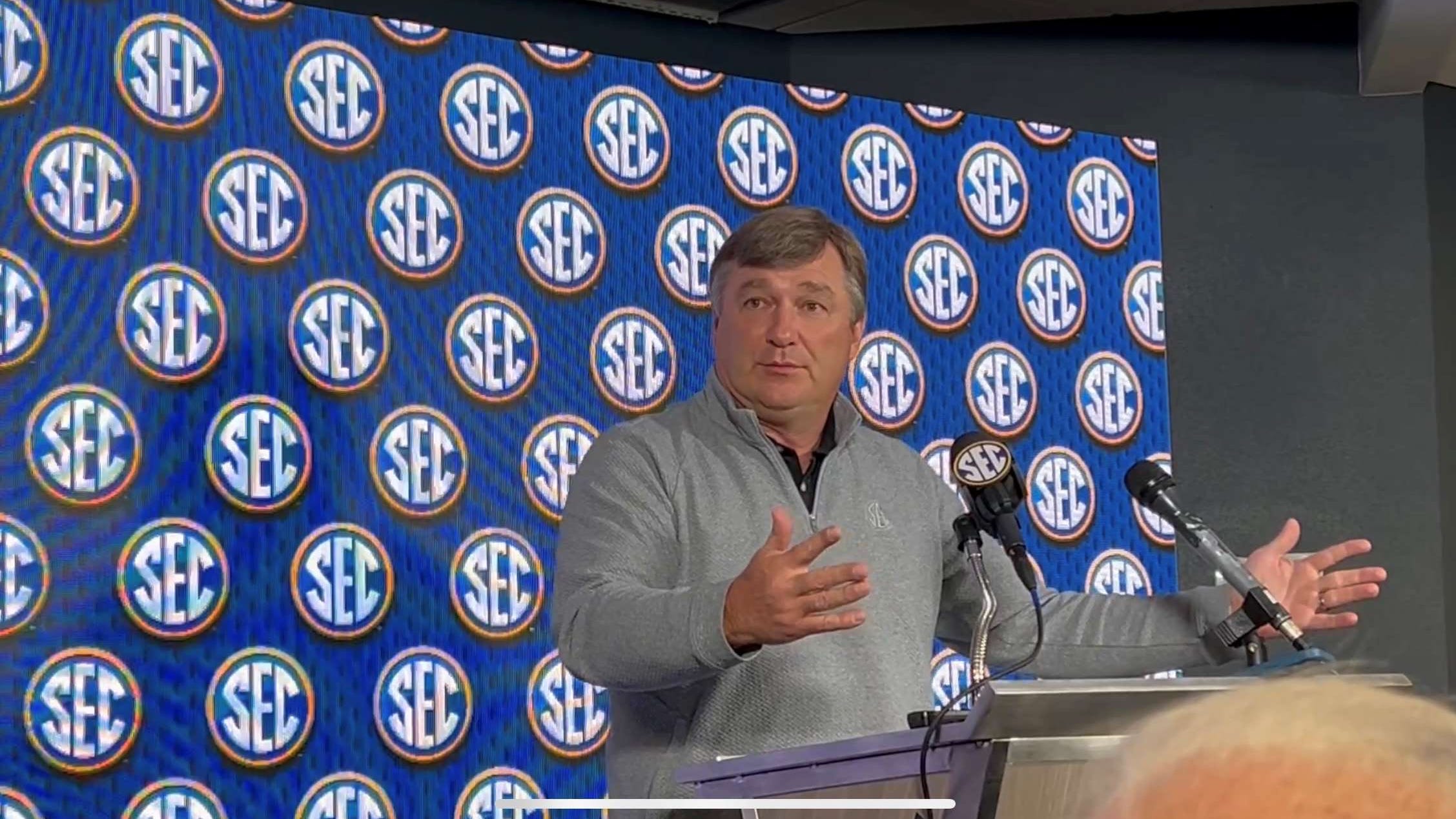
Kirby Smart on college football’s future
Kirby Smart urges leaders to prioritize the game’s future over personal or conference agendas in playoff talks.
- How much capped revenue share money will each team within an athletic department receive? That’s left to schools to decide. Welcome to “Capology.”
- Conventional wisdom will lead many schools to distribute most of their revenue share allotment to football and men’s basketball, but opportunities exist for deviations.
- Schools’ autonomy opens the door for some outside-the-box spending ideation. Schools have the chance to identify and spend on the sports that matter most to their fans and school fabric.
They’re playing a new game at college athletic departments. We’ll call it “Capology,” and game play tasks athletic directors to be the banker.
A legal settlement approved June 6 authorizes schools to directly pay athletes from athletic department coffers in the form of revenue sharing, beginning July 1. That revenue sharing will be capped this year at about $20.5 million per school.
Athletes’ separate NIL deals brokered with outside entities won’t count against a school’s revenue share cap.
How much capped revenue share money will each team within an athletic department receive? That’s left to individual schools to decide.
Commissioners from the Power Four conferences plus the rebuilt Pac-12 confirmed their schools retain the authority to determine the percentage breakdown of how they’ll distribute their capped allotment with their teams.
Decisions, decisions, for athletic directors tasked to dole out the dough.
“Things get very political really quick of who gets what resources,” Mississippi State athletic director Zac Selmon said, “but I think you’ve got to continue to invest in programs that generate the revenue. That’s No. 1.
“And No. 2, would be, what’s the fabric of your school? For us, at Mississippi State, baseball is a huge deal.”
Selmon’s assessment holds true to the way many athletic directors view this: The top revenue-generating sports of football and men’s basketball will get the lion’s share of revenue share dollars – about 90% combined across the two sports – with a smaller fraction going to women’s basketball, and other bedrock sports that help form the school’s identity will receive the leftover dollars.
MAJOR BOOST: The teams that benefit from playoff expansion
BIG FALL: SEC propaganda campaign shows it’s no longer top playoff dog
Within the SEC, at least, it’s widely believed many schools will use a baseline distribution model that uses the settlement’s backpay formula as a guide. Using this model, about 75% of a school’s revenue sharing cap will go to the football program, with about 15% going to men’s basketball, 5% to women’s basketball, and 5% for other sports.
Those 75-15-5-5 percentages, though, are not mandated, either within the SEC or beyond.
The breakdown could vary, as an institution sees fit.
“Conference to conference, school to school, sport revenue share allocations will vary based on several factors,” Oklahoma athletic director Joe Castiglione said.
Schools’ autonomy opens the door for some outside-the-box thinkers to emerge within “Capology.” This, too, is an opportunity for schools to identify and spend on the sports that matter most to their fans, and where they think they can win big.
“We’re giving our institutions discretion,” Big Ten commissioner Tony Petitti said, a sentiment echoed by the other power conference commissioners, “and they want that discretion.”
Conventional wisdom versus outside-the-box spending
Take Wisconsin, as an example.
The Badgers’ women’s basketball team last made the NCAA Tournament 15 years ago. Its robust volleyball program nearly doubles the women’s basketball team’s average attendance. Why shouldn’t Wisconsin zig where others zag and apply a higher percentage of its revenue sharing dollars toward volleyball, and less toward women’s basketball?
I’m thinking that rationale should apply, too, to Nebraska and Penn State, where powerhouse volleyball programs outperform and outdraw women’s basketball.
These Big Ten schools I’ve referenced have not disclosed their distribution percentage plan. I’m just spit-balling some “Capology” spending ideas that could allow schools to further excel in sports where they typically thrive.
Here’s another test subject: Florida women’s basketball last made a Sweet 16 in 1998, and its attendance limps behind SEC peers. The Gators’ softball program is a Women’s College World Series regular. Might Florida be better off spending less than SEC peers on women’s hoops and more on softball, in an attempt to gain separation in a diamond sport that enjoys relevance within the SEC?
In contrast, South Carolina and LSU shouldn’t put women’s basketball on the back burner. There, the women’s basketball teams outperform and outdraw their men’s counterparts. So, should the men’s programs really receive so much more in revenue sharing than the women?
“I think we need to be a little more generous than 5%,” South Carolina coach Dawn Staley told The State newspaper earlier this year, referencing the 5% baseline within the SEC for women’s basketball. “That’s my feel on it.”
Who could blame Staley for believing her team shouldn’t be shortchanged? It’s up to her institution, though, to decide how to divvy up the money. A school could even try to outspend South Carolina women’s basketball to try to accelerate past the Gamecocks.
Many schools will follow conventional wisdom on how dollars should be spent, but the opportunity exists to break from the mold.
Texas Tech revealed it plans to share 17 to 18% with its men’s basketball team, which reached the Elite Eight last season, and 2% to its women’s basketball team, which last reached the NCAA Tournament in 2013.
Priorities, right?
Football will receive most revenue share, but how much?
Consider a school that usually struggles in football. Should it allocate a smaller revenue share percentage to football than its peers and apply more money toward other sports? Perhaps, that’s worth mulling at schools where basketball or Olympic sports shine. Here’s an alternate idea: If you’re lagging in football, spend an even higher percentage of your allotment on football than the baseline, to try to close the talent gap.
Indiana showed how quickly a football team can transform from irrelevant to playoff qualifier in an era in which players may transfer without penalty.
Is it worth the risk to spend big, though, to play catchup, knowing that strategy would reduce the revenue share money available for other sports? That’s a question athletic directors must ponder.
Schools aren’t required to publicly disclose their distribution percentage plan, either, meaning one school won’t necessarily know exactly how its distribution model compares to another school.
Football revenues provide the financial lifeblood of college sports, but nothing says a basketball blueblood couldn’t spend less of its revenue share allotment on football, as compared to the industry standard, and outpace its peers on basketball spending.
“There will be some institutions that might give 60% to football and 20% to men’s basketball, or any variation one could think of,” Castiglione said, speaking in general terms and not in reference to a particular school. “That’s an institutional choice.”
Just another decision when playing “Capology.”
Blake Toppmeyer is the USA TODAY Network’s national college football columnist. Email him at BToppmeyer@gannett.com and follow him on X @btoppmeyer.
NIL
BYU’s AJ Dybantsa Becomes College Basketball’s Top NIL Earner
BYU’s AJ Dybantsa Becomes College Basketball’s Top NIL Earner originally appeared on Athlon Sports. BYU’s AJ Dybantsa is already turning heads before the 2025-26 college basketball season. As the No. 1 player in the country, he’s already projected as the top pick in the 2026 NBA Draft. But his moves off the court are just […]
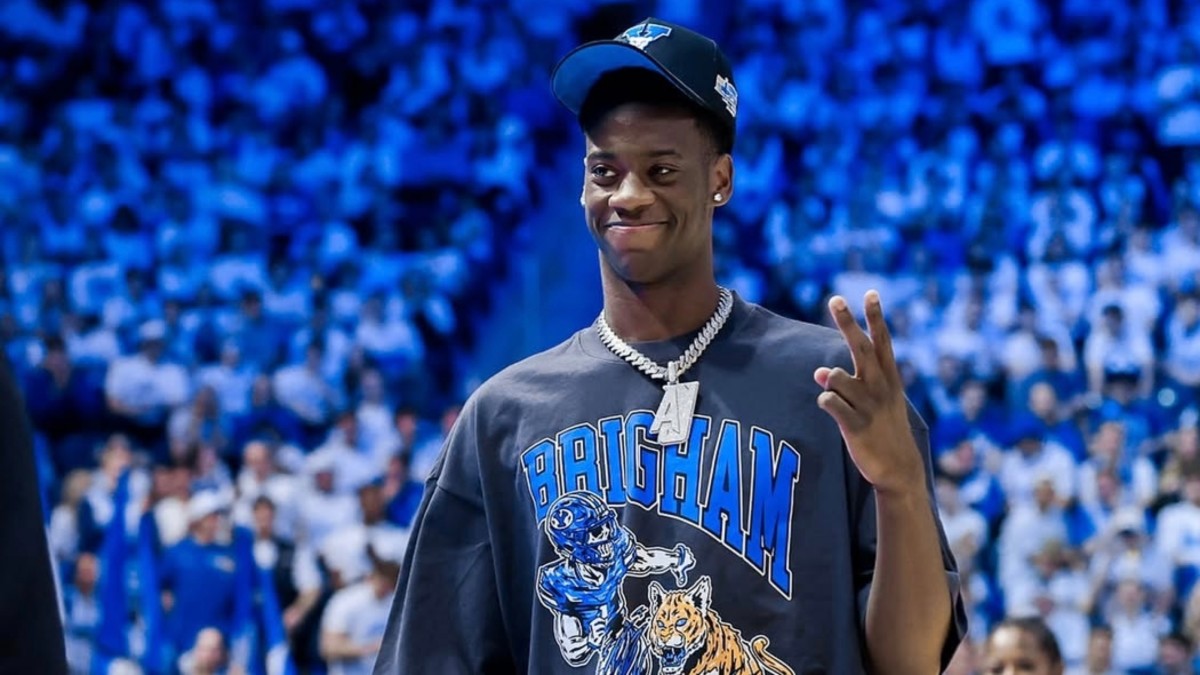
BYU’s AJ Dybantsa Becomes College Basketball’s Top NIL Earner originally appeared on Athlon Sports.
BYU’s AJ Dybantsa is already turning heads before the 2025-26 college basketball season. As the No. 1 player in the country, he’s already projected as the top pick in the 2026 NBA Draft. But his moves off the court are just as good.
Advertisement
Dybantsa saw a significant jump in his On3 NIL valuation recently. He moved up to $4.1 million and cracked the top five for the first time in his career. As it stands now, the 6-foot-9 power forward is only $200K away from Miami QB Carson Beck at No. 2 ($4.3M) and $100K from Ohio State receiver Jeremiah Smith ($4.2M). Arch Manning is firmly at the top with a valuation of $6.8 million.
However, Dybantsa is the top college basketball earner after landing deals with Nike and Red Bull. Dybantsa is on a contract with BYU to receive over $7 million this season, according to Adam Zagoria of the New York Times. An NIL offering he denied at the McDonald’s All-American Game.
Related: BYU Basketball Shows Interest in Rising International Star
BYU has picked up the pace on the NIL trail very quickly. One of the biggest contributors is Utah Jazz and Utah Mammoth owner Ryan Smith. But underneath it all is Kevin Young. The Cougars coach came to Provo after being an NBA assistant for the Phoenix Suns and Philadelphia 76ers. His detailed guidance and pro-ready approach is why Dybantsa decided to sign with BYU.
Advertisement
Related: BYU Cracks ESPN’s Future Power Rankings Top 25
As the season quickly approaches, Dybantsa will be part of the most hype-filled year in BYU Basketball history. The Cougars projected starting lineup has many national outlets putting them as a national title contender and on a level playing field in the Big 12 with Houston, who is coming off a heartbreaking loss in the National Championship to Florida.
The upcoming season will be fun to watch as Dybantsa has already said he’s one-and-done before turning pro.
This story was originally reported by Athlon Sports on Jun 12, 2025, where it first appeared.
NIL
The Dirty Nil Drop Urgent Single 'Rock N' Roll Band'
The Dirty Nil have shared the latest taste of upcoming album ‘The Lash’ in the form of urgent single ‘Rock N’ Roll Band’. With ‘The Lash’ set for release on July 25 via Dine Alone Records, it follows recent single ‘Gallop Of The Hounds’. A razor-sharp gut-punch of a track, on ‘Rock N’ Roll Band’ […]


The Dirty Nil have shared the latest taste of upcoming album ‘The Lash’ in the form of urgent single ‘Rock N’ Roll Band’.

With ‘The Lash’ set for release on July 25 via Dine Alone Records, it follows recent single ‘Gallop Of The Hounds’.
A razor-sharp gut-punch of a track, on ‘Rock N’ Roll Band’ frontman Luke Bentham has shared:
“This is the first song I wrote for The Lash… I don’t remember what particular aspect of the industry had got my goat that day but I’d worked myself up to a fine lather. I blasted out the whole song in 30 minutes and instantly felt better. Though the song is pretty negative, it makes me happy. This one is for all the road dogs, we salute you.”
Take a listen below:
‘The Lash’ will arrive ahead of the band’s return to the UK when they will play London on October 25 and Leeds on the 26th as part of the Common Thread tour with Hot Water Music, Spanish Love Songs, Comeback Kid and Joyce Manor.
Check out the artwork and tracklisting for the album below:

1) Gallop of the Hounds
2) Fail in Time
3) That Don’t Mean It Won’t Sting
4) Rock ‘n’ Roll Band
5) This Is Me Warning Ya
6) Do You Want Me?
7) Spider Dream
8) They Won’t Beat Us
9) Hero Narrative
10) I Was A Henchman
NIL
Breaking down house settlement and how it could impact UF athletics
Swampcast breaks down Florida softball at WCWS, Florida basketball The Sun’s Kevin Brockway and Noah Ram and Kevin Brockway are joined by Nathan Geise of the Lubbock Avalanche-Journal to break down Florida softball, Texas Tech in WCWS. The University of Florida can now pay athletes directly due to the House vs. NCAA settlement. Florida football […]
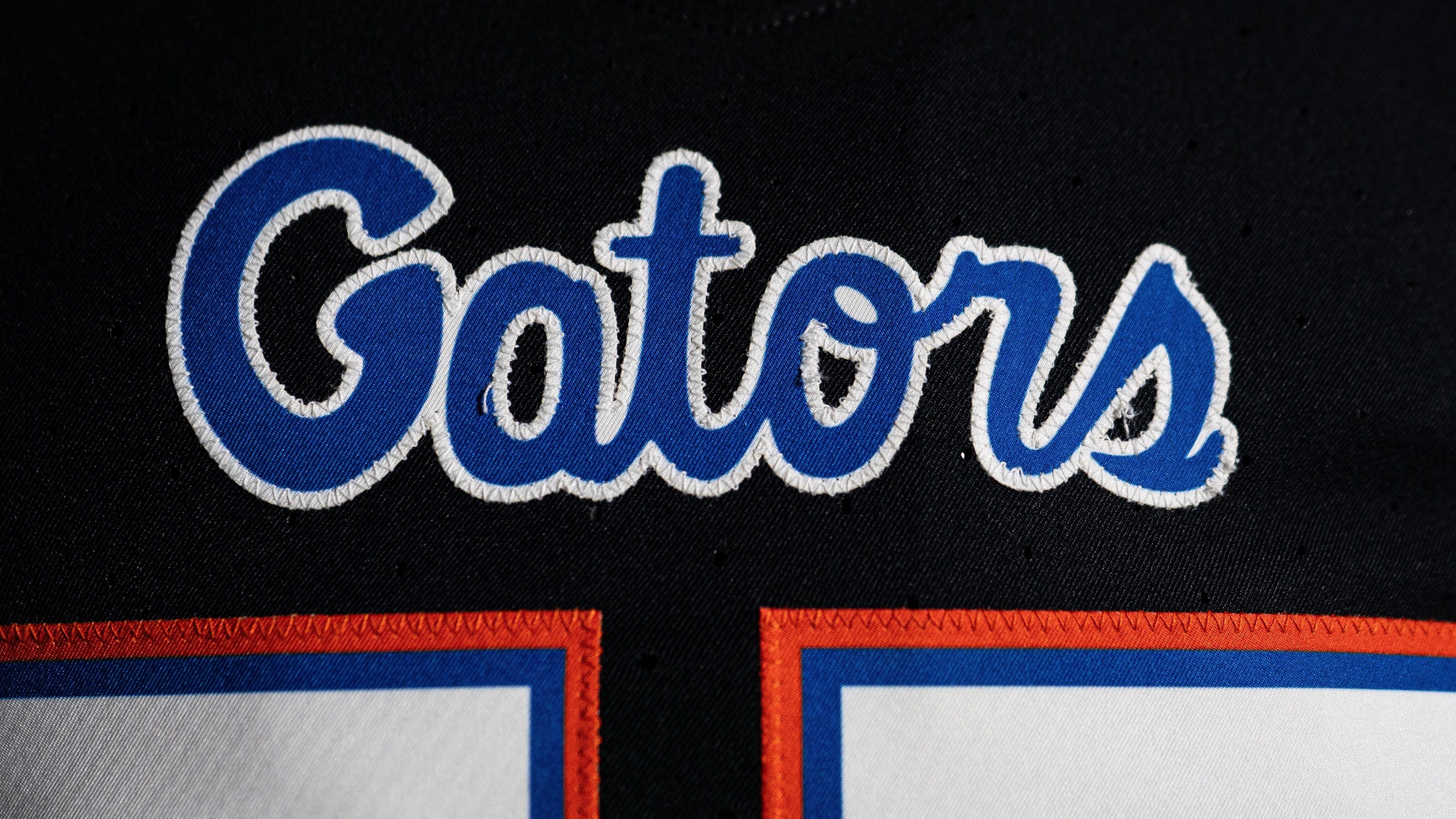
Swampcast breaks down Florida softball at WCWS, Florida basketball
The Sun’s Kevin Brockway and Noah Ram and Kevin Brockway are joined by Nathan Geise of the Lubbock Avalanche-Journal to break down Florida softball, Texas Tech in WCWS.
- The University of Florida can now pay athletes directly due to the House vs. NCAA settlement.
- Florida football and men’s basketball are likely to receive the majority of the $20.5 million allocated for athlete compensation.
- NIL deals exceeding $600 will be reviewed for legitimacy by a clearinghouse monitored by Deloitte.
The landmark House vs. NCAA Settlement, approved on June 6 by U.S. District Court Judge Claudia Wilken, opens the door for athletes to be paid directly by the University of Florida Athletic Association.
According to the settlement, starting on July 1, UF can spend up to $20.5 million on its athletes, which includes funding scholarships and paying them directly. How that money is allocated by sport remains to be seen. Florida athletic director Scott Stricklin was unavailable for comment this week and may or may not choose to disclose how the money will be distributed.
UF has the potential to provide financial support to all 21 of its men’s and women’s sports, either by paying athletes directly or funding scholarships. Priority, though, will likely be given to two major revenue producing sports, Florida football and Florida basketball, which is coming off a national championship season. A model prescribed in the preliminary House settlement calls for about 75% to be paid to football players, 15% to men’s basketball, 5% to women’s basketball and 5% to other sports.
That’s based on the revenue generated by each sport. Per UF’s latest NCAA financial report, football generated $100,796,971 in revenue in fiscal year 2024, followed by men’s basketball at 14,344,967 and baseball at 4,328,038. Football accounted for 50.4% of UF’s total athletic department revenues ($200,094,587), while basketball accounted for 7.2%.
Stricklin released a statement on June 7, the day after the settlement was reached.
“The University of Florida Athletic Association welcomes the recent court ruling allowing schools to directly share revenue with student-athletes,” Stricklin said in the statement. “This decision marks an important step forward for college athletics, and we remain committed to supporting Gator athletes on and off the field. Beyond financial opportunities, the UAA will continue to provide world-class training, academic support, and career development to help our Gators succeed during their time at UF and beyond.”
Can Florida athletes still receive outside endorsements?
Florida athletes can still receive outsides Name, Image and Likeness endorsements based on the value of their brands. But those deals will undergo more scrutiny.
All NIL deals of more than $600 will pass through a clearinghouse which will determine the legitimacy of the deal based on the athlete’s market value. For example, Cooper Flagg’s multi-million-dollar deal with New Balance would pass the smell test based on coming into college basketball as the nation’s top college recruit playing for one of the sport’s biggest college basketball brands, Duke. But under the new system, the days of promising a five-star offensive lineman a six-figure deal NIL deal out of high school to keep from signing with a rival school are likely over.
The accounting firm Deloitte will monitor the NIL clearinghouse. Athletes will submit NIL deals of more than $600 to an online platform called NIL Go, where they will be reviewed.
The NCAA will no longer be involved in rules enforcement, replaced by the College Sports Commission, which was formed by and has received the full backing from major conference commissioners. The College Sports Commission will hand out punishments to schools who break rules regarding NIL and revenue sharing.
“Our schools want rules,” Big 12 commissioner Brett Yormark told a group of national media outlets this week. “We’re providing rules, and we will be governed by those rules. And if you break those rules, the ramifications will be punitive.”.
Mit Witner, a Kansas City-based attorney specializing in sports law and NL legislations, expects more legal challenges to arise due to the NCAA’s inability to secure an antitrust exemption.
“If the College Sports Commission says if an athlete wants to remain eligible, they can’t do this deal to play college sports, it’s acting as a limit on the college athlete’s compensation,” Witner said. “There’s no antitrust exemption now for that, so I definitely think there will be litigation on that issue.”
How Florida football has prepared for paying its players
Florida football coach Billy Napier said he expects revenue share to provide more stability in terms of compensating football players entering the 2025 season.
In Napier’s first three seasons, he relied on funds and NIL deals generated from Florida Victorius and the now defunct Gator Collective. A botched NIL deal by the Gator Collective for five-star quarterback recruit Jaden Rashada resulted in Napier, booster Hugh Hathcock and former UF staff member Marcus Castro-Walker getting sued by Rashada for fraud and vicarious liability.
Last February, Napier made two front office hires to the football program, adding Benjamin Elsner as director of football strategy and Nick Polk as Associate Athletic Director/Football General Manager,
Polk spent 17 seasons as Director of Football Operations for the Atlanta Falcons (2004-21), where he was responsible for salary cap management, including draft negotiations, contract proposals, player contracts, coaches’ contracts, trades and trade value analysis. Those skills will be put to test in the new college sports revenue share era.
“His experience with the cap management, the strategy around contracts, that’s part of the game, right?” Napier said last March. “He’s hit the ground running.”
Kevin Brockway is The Gainesville Sun’s Florida beat writer. Contact him at kbrockway@gannett.com. Follow him on X @KevinBrockwayG1. Read his coverage of the Gators’ national championship basketball season in “CHOMP-IONS!” — a hardcover coffee-table collector’s book from The Sun. Details at Florida.ChampsBook.com
NIL
Maryland NIL Collective Pushes Back on Ja'Kobi Gillespie Lawsuit
Maryland NIL Collective Pushes Back on Ja’Kobi Gillespie Lawsuit originally appeared on Athlon Sports. What started as a breakout season for Ja’Kobi Gillespie at Maryland has unraveled into a legal battle that could shake the foundation of NIL deals nationwide. Advertisement Advertisement Advertisement Gillespie, who averaged 14.7 points and earned second-team All-Big Ten honors before […]
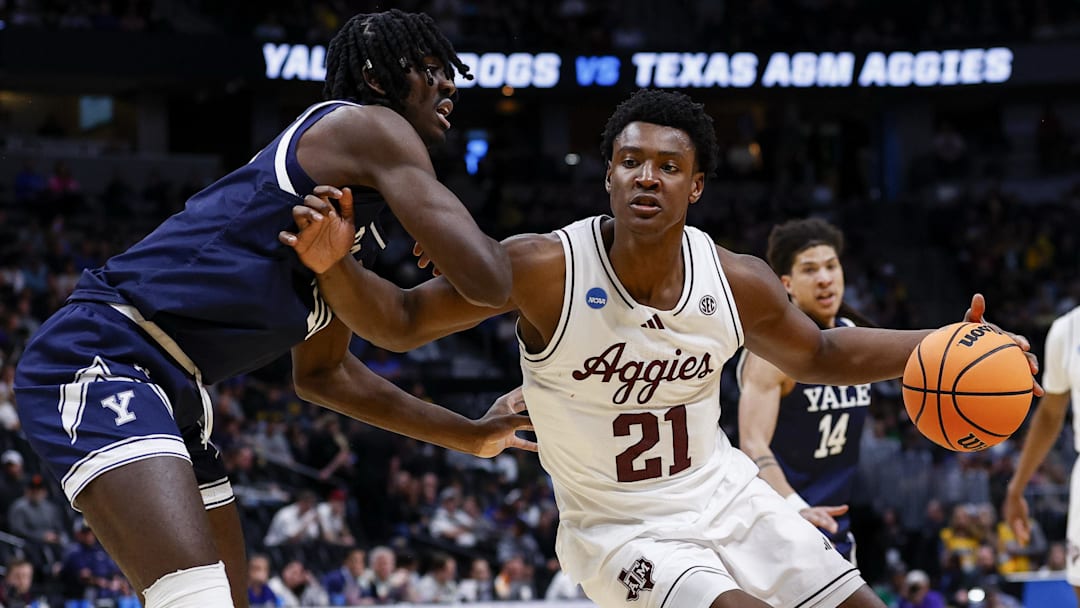

Maryland NIL Collective Pushes Back on Ja’Kobi Gillespie Lawsuit originally appeared on Athlon Sports.
What started as a breakout season for Ja’Kobi Gillespie at Maryland has unraveled into a legal battle that could shake the foundation of NIL deals nationwide.
Advertisement
Gillespie, who averaged 14.7 points and earned second-team All-Big Ten honors before transferring to Tennessee, is suing Blueprint Sports, the operator of Maryland’s NIL collective, over what his father claims is $100,000 in unpaid compensation. But Maryland’s NIL leadership is calling the claims baseless, and they’re not backing down.
“It was always explained to the Gillespie family that if they transferred, the payments would stop, as it’s a year-round commitment,” said Turtle NIL founder Harry Geller, who helped negotiate the original deal before Blueprint took over.
The legal spat hinges on a key detail: whether Gillespie’s contract explicitly stated payments would continue even after entering the transfer portal. According to Geller, every contract he drafted included a transfer clause that nullified payments. However, Gillespie’s final contract, rewritten by Blueprint, apparently omitted that clause.
Still, Geller insists that “strong language in the BPS contract referring to the consequences of transferring” protects the collective from liability.
Advertisement
The stakes are high, not just for Gillespie, but for every player banking on NIL guarantees. If Gillespie’s side prevails, it could set a precedent that forces collectives nationwide to pay more attention to contract continuity and transparency.

Maryland Terrapins forward Julian Reese, center Derik Queen, and guard Ja’Kobi GillespieSteven Bisig-Imagn Images
His father, Byron Gillespie, told The Baltimore Sun that the lack of payment reflects broader dysfunction in Maryland’s NIL program.
“When Willard left, they pretty much quit paying all the players… There were players that did get their money and players that didn’t and are still fighting for it.”
Gillespie has since landed a reportedly $2 million NIL package at Tennessee, nearly five times what he earned at Maryland. That success is exactly why Geller questions the lawsuit’s motive.
Advertisement
“Why he is even pursuing this is beyond me,” Geller said. “He made the most of the opportunity and turned it into a major payday.”
Maryland’s program is still reeling from the departure of head coach Kevin Willard, who clashed with administration over NIL support. The Gillespie dispute only adds fuel to the perception that Maryland is lagging in the name, image, and likeness arms race.
For future recruits and current student-athletes, the outcome of this lawsuit could influence how NIL contracts are structured, enforced, and interpreted, especially in cases where athletes transfer.
Whether it’s a cautionary tale or a catalyst for change, Gillespie’s legal battle underscores one truth: NIL money may be flowing, but the rules are far from settled. Collectives, athletes, and universities alike must brace for a more regulated, and litigated future.
Advertisement
Related: Paul Finebaum Warns House NIL Ruling Is a “Ticking Time Bomb”
Related: The NCAA is Dead, Long Live the Game
This story was originally reported by Athlon Sports on Jun 11, 2025, where it first appeared.
NIL
Tennessee softball pitcher Peyton Tanner transfers to Baylor after freshman season
Tennessee softball pitcher Peyton Tanner has transferred to Baylor, she announced June 11. Tanner never publicly announced she was in the transfer portal, but posted her commitment to the Bears on Instagram. She’s the third player transfer out after Tennessee’s run to the Women’s College World Series. Sophomore infielder Ryan Brown and junior infielder Destiny […]
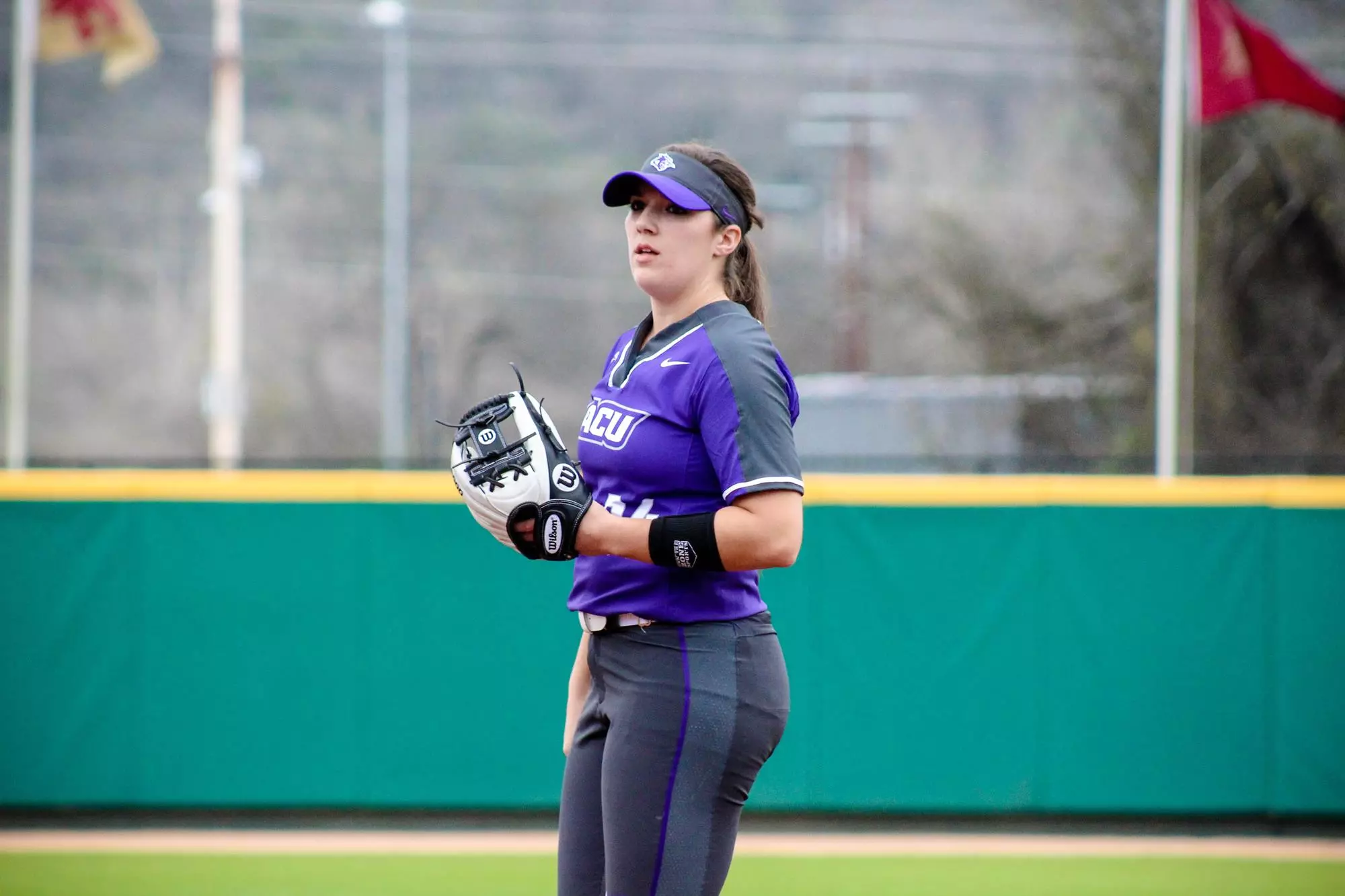

 Tennessee softball pitcher Peyton Tanner has transferred to Baylor, she announced June 11.
Tennessee softball pitcher Peyton Tanner has transferred to Baylor, she announced June 11.
Tanner never publicly announced she was in the transfer portal, but posted her commitment to the Bears on Instagram. She’s the third player transfer out after Tennessee’s run to the Women’s College World Series. Sophomore infielder Ryan Brown and junior infielder Destiny Rodriguez also entered the transfer portal since the season ended in the WCWS semifinals.
Baylor is located about four hours from Tanner’s home town of Lake Jackson, Texas.
The freshman didn’t get a lot of playing time, only starting in two of her nine appearances. She went 3-0 with a 3.36 ERA in 25 innings pitched, and threw 16 strikeouts with 12 walks.
Tanner was part of a historic day for Tennessee in March. She threw a perfect game against Delaware State on March 1 and All-American Karlyn Pickens threw a no-hitter on the same day. It was only the third time in program history that Tennessee pitchers threw no-hitters the same day, and the first since 2006.
Tanner’s perfect game made it the first time in program history it was a no-hitter combined with a perfect game. She logged six strikeouts as she retired all 15 hitters she faced in five innings.
Tanner was ranked No. 4 in the 2024 class by Extra Inning Softball and was a 2024 PGF All-American. But Tanner fell to fourth in the rotation behind fellow freshman Erin Nuwer, who started in 11 of her 18 appearances. Nuwer (6-4) threw 57⅓ innings overall with a 2.32 ERA and 65 strikeouts.
Tennessee is bringing in three more pitchers next season. Incoming freshmen Peyton Hardenburger is ranked No. 4 and Kailey Plumlee is ranked No. 22 in the class. Transfer Maddi Rutan, who was at Eastern Kentucky, has two seasons of eligibility left.
Cora Hall covers University of Tennessee women’s athletics. Email her at cora.hall@knoxnews.com and follow her on X @corahalll. If you enjoy Cora’s coverage, consider a digital subscription that allows you to access all of it.
-

 NIL2 weeks ago
NIL2 weeks ago2025 NCAA Softball Tournament Bracket: Women’s College World Series bracket, schedule set
-

 Health7 days ago
Health7 days agoOregon track star wages legal battle against trans athlete policy after medal ceremony protest
-

 Professional Sports1 week ago
Professional Sports1 week ago'I asked Anderson privately'… UFC legend retells secret sparring session between Jon Jones …
-

 College Sports2 weeks ago
College Sports2 weeks agoIU basketball recruiting
-

 Professional Sports1 week ago
Professional Sports1 week agoUFC 316 star storms out of Media Day when asked about bitter feud with Rampage Jackson
-

 Rec Sports2 weeks ago
Rec Sports2 weeks agoScott Barker named to lead CCS basketball • SSentinel.com
-

 Rec Sports2 weeks ago
Rec Sports2 weeks agoJ.W. Craft: Investing in Community Through Sports
-

 College Sports2 weeks ago
College Sports2 weeks agoOlympic gymnastics champion Mary Lou Retton facing DUI charge
-

 Motorsports2 weeks ago
Motorsports2 weeks agoNASCAR Penalty Report: Charlotte Motor Speedway (May 2025)
-

 College Sports1 week ago
College Sports1 week agoOKC’s Mark Daigneault knows what it takes to win championships. His wife has won a ton of them
















 | Get Up
| Get Up















